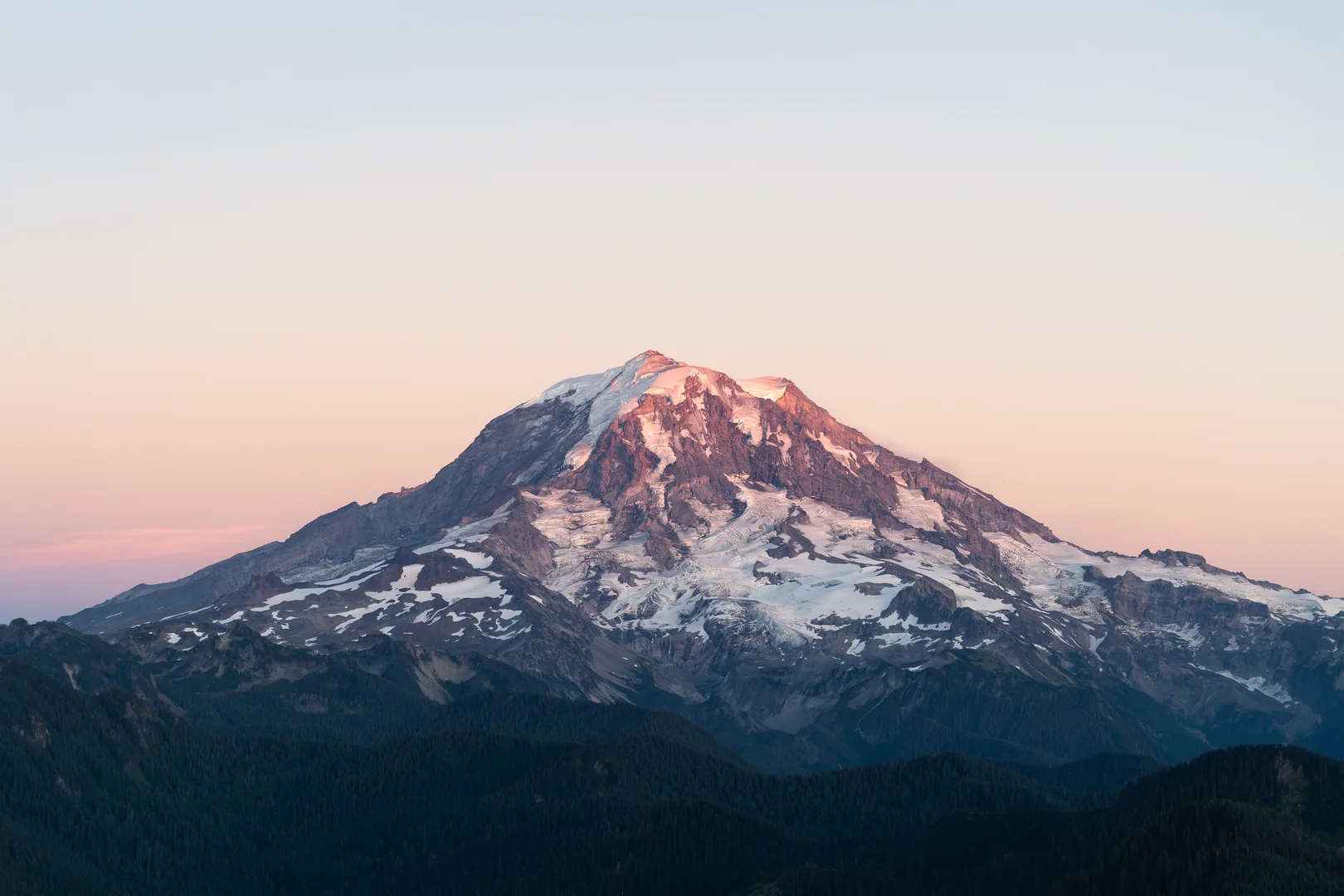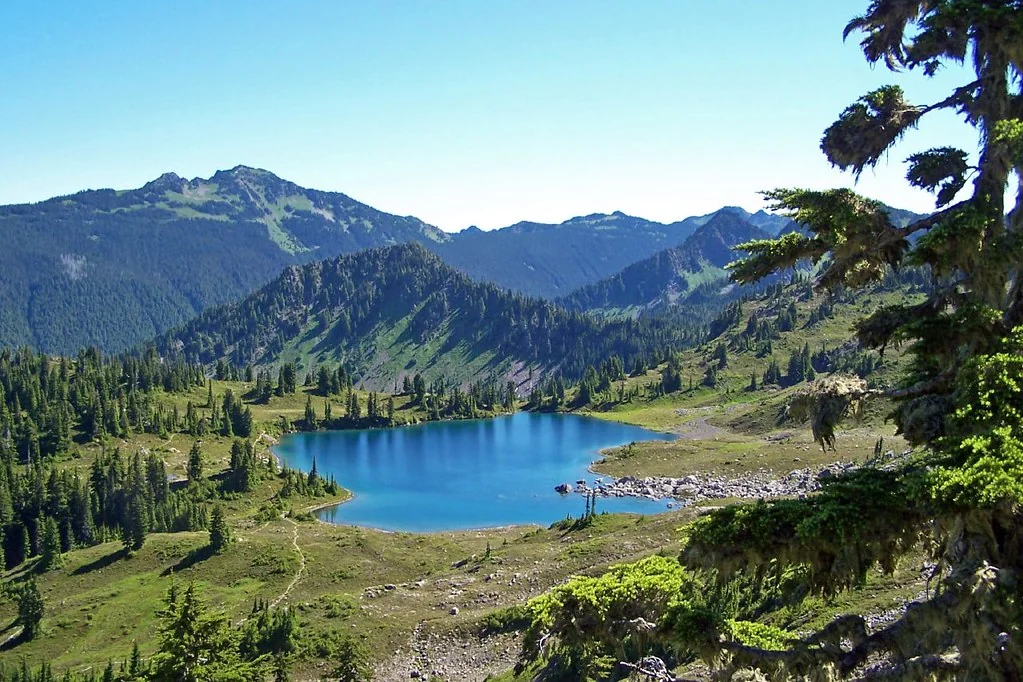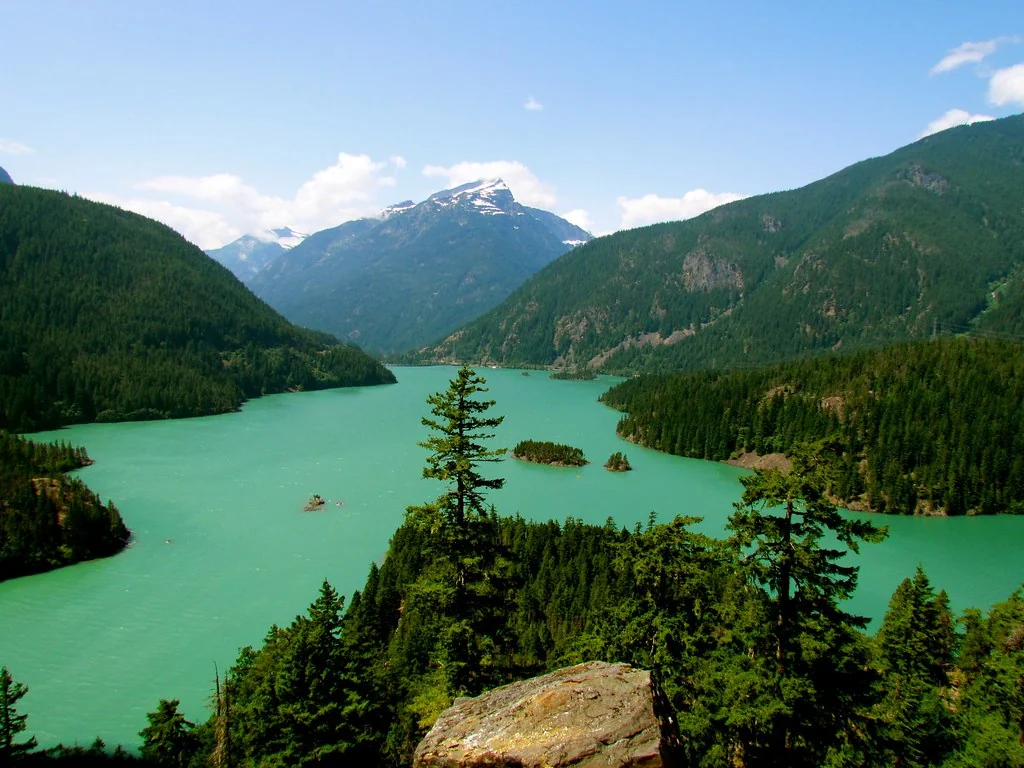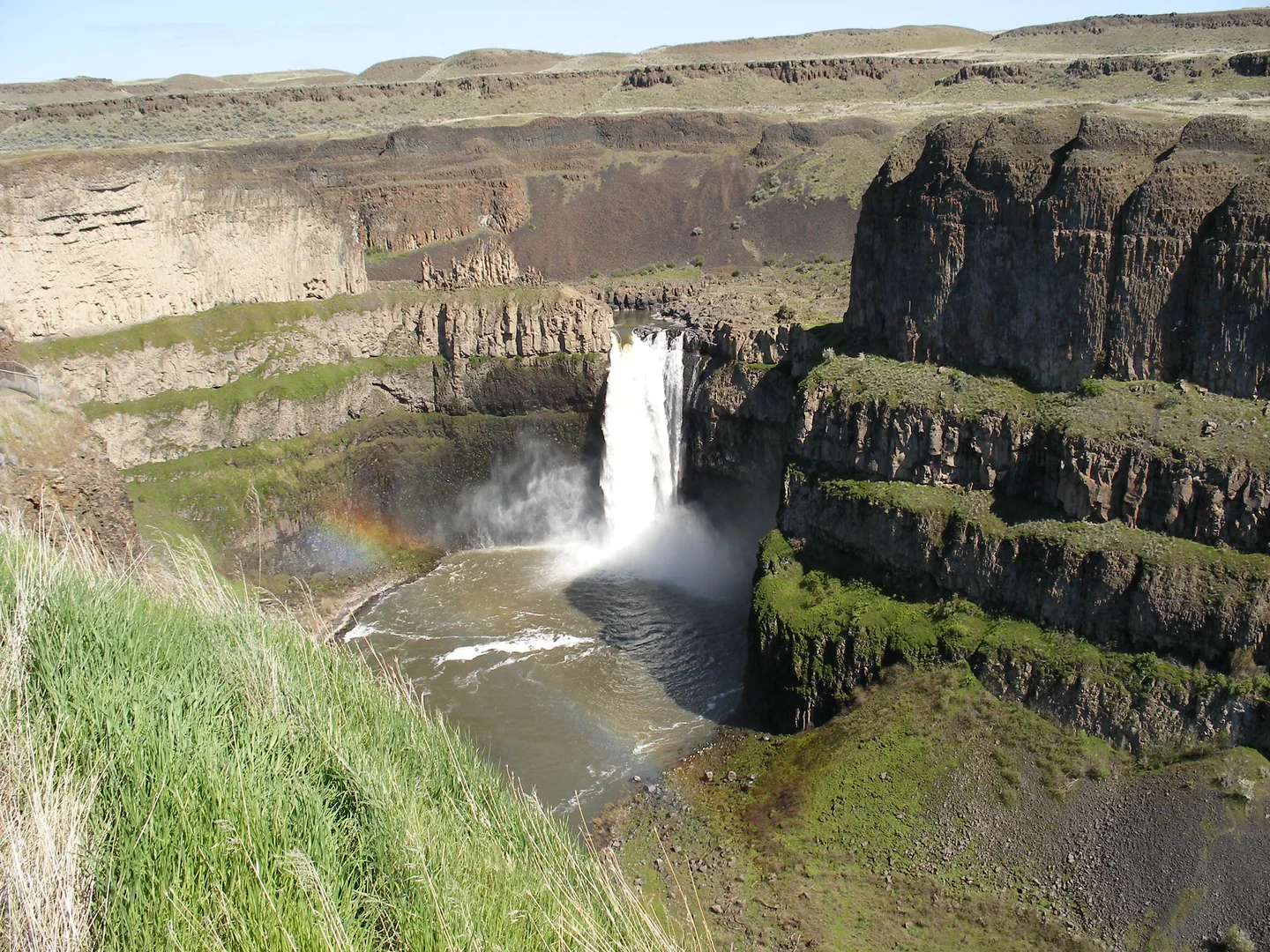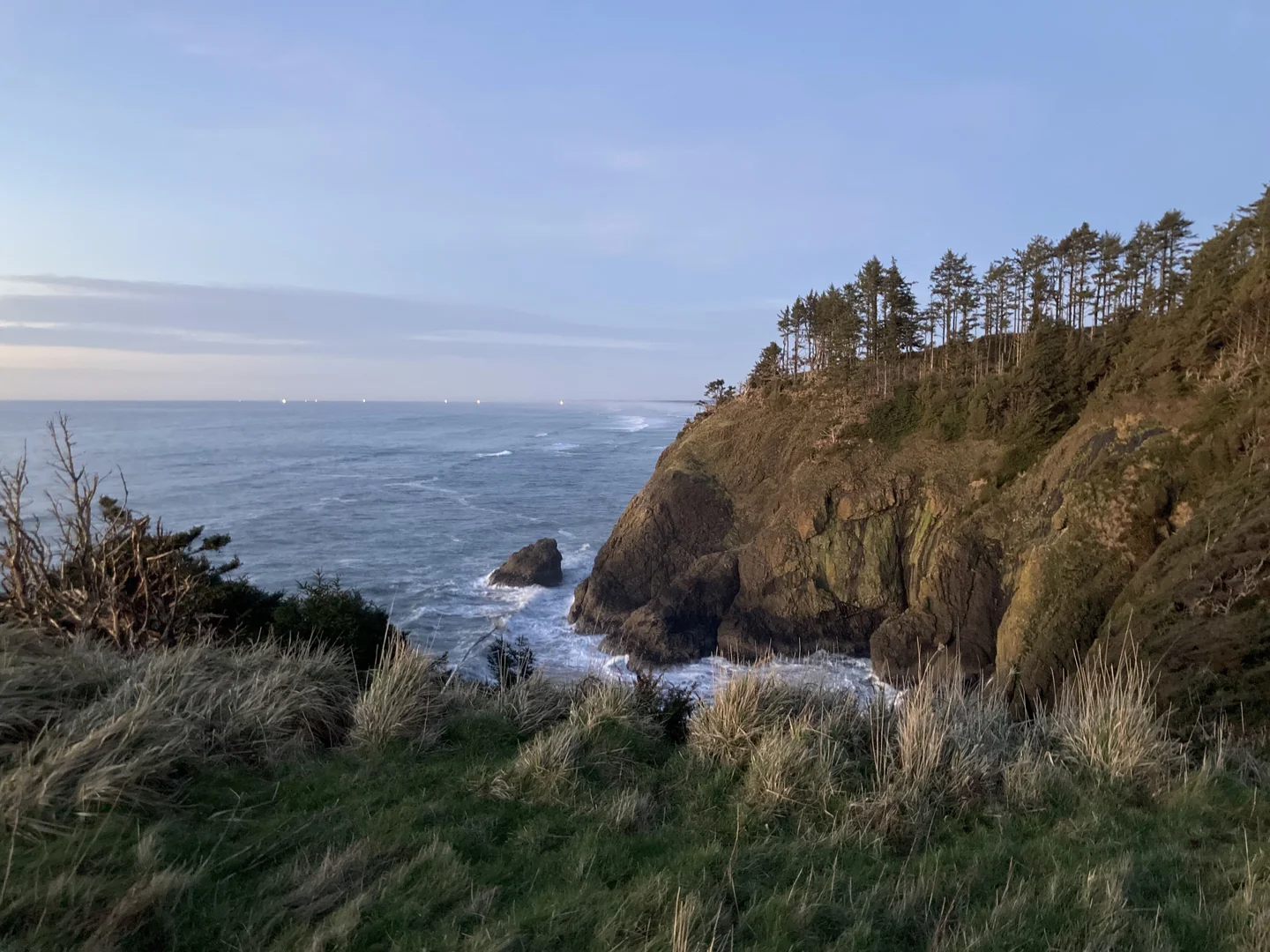10 Best National and State Parks in Washington
Complete guide to 10 best national and state parks in washington. Detailed information, recommendations, and everything you need to know

Washington State offers some of America's most spectacular natural landscapes, from towering volcanic peaks to ancient rainforests and dramatic coastlines. The state's diverse geography creates a playground for outdoor enthusiasts, with destinations ranging from world-renowned national parks to hidden state park gems that showcase unique ecosystems and geological wonders.
Whether you're drawn to glacier-carved mountain peaks, temperate rainforests draped in moss, or rugged Pacific coastlines where waves crash against towering sea stacks, Washington's parks deliver experiences that rival any destination in the world. The remarkable landscape spans from the volcanic Cascade Range to the complex waterways of Puget Sound, offering adventures for every skill level and interest.
Planning your park visits requires understanding Washington's distinct seasons and microclimates. Summer provides the best access to high-elevation areas, while spring and fall offer fewer crowds and spectacular seasonal displays. Winter brings its own magic, with snow-capped peaks creating dramatic backdrops and coastal storms producing powerful displays of nature's force. Each park presents unique opportunities to witness Washington's natural heritage, from ancient forests that predate European settlement to geological formations carved by massive ice age floods.
Mount Rainier National Park
Mount Rainier dominates the Washington landscape as the state's most prominent peak, rising 14,411 feet above sea level and serving as the centerpiece of this spectacular national park. The mountain's massive bulk supports 26 named glaciers and numerous snowfields, creating a living laboratory for understanding glacial processes and alpine ecosystems.
Paradise, the park's most popular destination, transforms into a wildflower wonderland during summer months when subalpine meadows explode with lupine, Indian paintbrush, and mountain asters. The Skyline Loop Trail from Paradise offers accessible hiking with stunning views of the mountain's south face and the Nisqually Glacier. This 1.2-mile paved trail accommodates visitors of all abilities while providing educational opportunities about volcanic geology and alpine ecology.
More adventurous visitors can tackle the trek to Camp Muir at 10,080 feet, a challenging 4.5-mile climb that serves as base camp for summit attempts. This route requires proper preparation, including sturdy boots, layers for changing weather, and plenty of water. The climb typically takes 4-6 hours and rewards hikers with panoramic views across the Cascade Range and into Oregon.
The park's diverse ecosystems support remarkable wildlife, including black bears, mountain goats, and over 130 bird species. Roosevelt elk roam the lower elevation forests, while hoary marmots and pikas inhabit the alpine zones. The old-growth forests contain some of Washington's largest Douglas fir and western red cedar trees, some exceeding 1,000 years in age.
Visiting requires advance planning, especially during peak summer months from July through September. The park charges $30 per vehicle for a seven-day pass, with annual passes available for $55. Snow typically closes high-elevation roads from November through May, though Paradise remains accessible year-round via the Nisqually entrance. Winter visitors find excellent snowshoeing and cross-country skiing opportunities, with ranger-led programs available on weekends.
Olympic National Park
Olympic National Park encompasses three distinct ecosystems within its nearly one million acres, creating one of the most diverse natural areas in the United States. The park's unique position on the Olympic Peninsula allows visitors to experience temperate rainforests, alpine meadows, and rugged coastline all within a single destination.
The Hoh Temperate Rainforest represents one of the finest examples of this rare ecosystem in North America. Ancient Sitka spruce and western hemlock trees create a cathedral-like canopy while moss drapes every surface in brilliant green. The Hall of Mosses Trail provides an easy 0.8-mile loop through the heart of this mystical landscape, where some trees exceed 300 feet in height and 500 years in age. The forest receives over 140 inches of annual rainfall, creating conditions that support an incredible diversity of ferns, lichens, and understory plants.
Hurricane Ridge offers a completely different experience, with alpine meadows and panoramic views across the Olympic Mountains. The visitor center sits at 5,242 feet elevation, providing year-round access to interpretive exhibits and seasonal programs. During summer months, wildflower displays rival those anywhere in Washington, while winter transforms the area into a popular destination for snowshoeing and skiing.
The park's 73 miles of wilderness coastline showcase some of the Pacific Northwest's most dramatic scenery. Ruby Beach features sea stacks rising from dark sand beaches, while tide pools reveal starfish, anemones, and other marine life during low tides. The coastal strip between Kalaloch and Ruby Beach offers accessible viewing points and short trails leading to isolated beaches where driftwood sculptures created by winter storms line the shore.
Wildlife viewing opportunities abound throughout the park. Roosevelt elk, the largest members of the deer family, graze in meadows and forest clearings. Mountain goats navigate cliff faces in the high country, while harbor seals and sea otters inhabit coastal waters. The park also protects critical habitat for the endangered Pacific salmon runs that support entire ecosystems.
Entry fees are $30 per vehicle for seven days, with multiple entrance points providing access to different areas. The park operates year-round, though snow limits high-elevation access during winter months. Coastal areas remain accessible throughout the year, offering storm watching opportunities during winter months when powerful Pacific storms create dramatic displays of wind and waves.
North Cascades National Park
The North Cascades earn their nickname as the "American Alps" through sheer vertical drama – jagged peaks, pristine alpine lakes, and over 300 glaciers create a landscape that rivals European mountain ranges. This relatively undiscovered national park offers some of Washington's most spectacular wilderness experiences for those willing to venture beyond the main highways.
The Cascade Pass Trail provides the most accessible introduction to the park's alpine splendor. This 7.4-mile round-trip hike climbs through old-growth forest before emerging into flower-filled meadows surrounded by towering peaks. The trail follows a historic Native American trading route and later served as a pathway for early settlers crossing the Cascades. From the 5,392-foot pass, panoramic views extend across the Stehekin Valley and toward the glaciated summits of Eldorado Peak and Forbidden Peak.
Ross Lake National Recreation Area, managed as part of the North Cascades complex, offers a different perspective on the region's beauty. The 23-mile-long reservoir provides access to remote areas via boat or kayak, with floating cabins and boat-in campsites creating unique accommodation options. The lake's turquoise waters reflect surrounding peaks, creating photographer's paradise during calm conditions.
Diablo Lake, with its distinctive green color caused by glacial flour suspended in the water, provides another stunning destination accessible by car. The Diablo Lake Trail offers relatively easy hiking with spectacular lake views, while the Seattle City Light tours provide educational opportunities about hydroelectric power generation and its impact on the landscape.
The park's extensive trail system caters to serious backpackers and mountaineers. The Ptarmigan Ridge Trail leads to views of Mount Baker's glaciated north face, while the Blue Lake Trail provides access to one of Washington's most photographed alpine lakes. These destinations require proper preparation and navigation skills, as weather conditions can change rapidly in the high country.
Wildlife in the North Cascades includes all of Washington's large mammals. Black bears and grizzly bears both inhabit the park, though grizzly sightings remain extremely rare. Mountain goats are frequently spotted on cliff faces, while wolverines and lynx represent some of North America's most elusive predators.
The park operates without entrance fees, though parking at popular trailheads can be extremely limited during summer weekends. Snow typically restricts high-elevation access from October through June, with peak hiking conditions occurring from July through September. The challenging terrain and unpredictable weather make this destination best suited for experienced outdoor enthusiasts.
Deception Pass State Park
Deception Pass State Park showcases the complex beauty of Puget Sound's island geography, where Whidbey and Fidalgo Islands meet beneath one of Washington's most photographed bridges. The dramatic 976-foot steel span rises 180 feet above churning tidal waters, creating a iconic gateway between island communities and the mainland.
The park's trail system provides numerous vantage points for appreciating this stunning vista. The Deception Pass Bridge Walk allows pedestrians to cross between islands while observing the powerful tidal currents below. During peak tidal exchanges, water rushes through the narrow passage at speeds exceeding eight knots, creating whirlpools and standing waves that demonstrate the raw power of tidal forces.
Bowman Bay offers protected waters perfect for kayaking and small boat exploration. The bay's sheltered conditions make it ideal for beginning paddlers, while experienced kayakers can venture into the more challenging waters of the main passage. The rocky shoreline provides excellent tide pooling opportunities during low tides, with purple sea urchins, ochre sea stars, and green anemones inhabiting the intertidal zone.
The park encompasses over 4,100 acres of diverse habitats, from old-growth Douglas fir forests to salt marshes and rocky beaches. The Discovery Trail system includes several loops ranging from easy walks to moderate hikes through forested areas. The Goose Rock Summit Trail climbs to a 484-foot viewpoint offering panoramic views across the San Juan Islands, Skagit Bay, and the Cascade Mountains.
Camping facilities include 246 sites distributed among several campgrounds, making this one of Washington's most popular state park destinations. Cranberry Lake provides freshwater swimming and fishing opportunities, while the lake's surrounding wetlands support diverse bird life including great blue herons, kingfishers, and seasonal waterfowl migrations.
The park's location at the intersection of marine and terrestrial environments creates exceptional wildlife viewing opportunities. Harbor seals frequently haul out on rocky points, while bald eagles nest in tall trees overlooking the water. River otters play in kelp beds visible from shoreline trails, and seasonal whale migrations occasionally bring orcas and gray whales through nearby waters.
Day use fees are $10 per vehicle, with camping rates ranging from $25-45 depending on site type and amenities. The park operates year-round, though winter storms can create hazardous conditions for bridge crossing and shoreline access. Spring and fall offer the best combination of favorable weather and reduced crowds, while summer weekends require advance planning for parking and camping reservations.
Palouse Falls State Park
Palouse Falls plunges 198 feet into a dramatic basalt canyon, creating Washington's official state waterfall and one of the most spectacular geological displays in the Pacific Northwest. This remarkable landscape tells the story of massive ice age floods that carved the Columbia River Plateau approximately 15,000 years ago, when glacial Lake Missoula repeatedly burst through ice dams and scoured the landscape.
The waterfall represents the last remaining major cataract from the ancient Palouse River's original course. During the Missoula Floods, water reached depths of 400 feet in this area, carving the dramatic canyon walls and creating the plunge pool that exists today. The basalt formations visible in the canyon walls originated from lava flows that occurred millions of years earlier, creating the foundation for this unique landscape.
Viewing areas provide safe access to spectacular overlooks of the falls and surrounding canyon. The main viewpoint sits approximately 0.2 miles from the parking area via an easy walk suitable for all visitors. More adventurous photographers can access additional viewpoints along informal trails, though these routes require careful navigation and appropriate safety precautions due to loose rock and cliff exposure.
The falls maintain year-round flow, though seasonal variations create dramatically different experiences. Spring snowmelt and rainfall typically produce the most impressive displays, with water volumes that thunder into the plunge pool below. Late summer and fall reduce flows to more modest levels, but the reduced water volume allows better appreciation of the underlying rock formations and geological features.
The park's 105 acres include basic day-use facilities and primitive camping opportunities. The landscape surrounding the falls represents typical Columbia Plateau ecology, with native bunch grasses, sagebrush, and scattered basalt outcroppings. This arid environment contrasts sharply with western Washington's forests, providing visitors with insight into the state's diverse climate zones and ecosystems.
Wildlife adapted to arid conditions includes rattlesnakes, so visitors should remain alert while exploring beyond designated areas. Hawks and eagles often soar through the canyon, while ground squirrels and other small mammals inhabit the rocky terrain. Spring wildflower displays can be spectacular, with balsamroot and lupine creating colorful carpets across the surrounding hills.
Located in southeastern Washington near the town of Washtucna, the park requires approximately a four-hour drive from Seattle. The remote location means visitors should come prepared with water, snacks, and full fuel tanks. Entry fees are $10 per vehicle for day use, with primitive camping available for $10 per site. The park operates year-round, though winter conditions can create icy conditions on access roads and viewing areas.
Cape Disappointment State Park
Cape Disappointment State Park occupies a dramatic headland where the Columbia River meets the Pacific Ocean, creating one of Washington's most historically significant and scenically spectacular coastal destinations. Two historic lighthouses stand sentinel over waters known as the "Graveyard of the Pacific," where over 2,000 vessels have met their fate in treacherous currents and shifting sandbars.
The North Head Lighthouse, perched 194 feet above the ocean on dramatic cliffs, provides panoramic views of the Columbia River bar and Pacific coastline. Built in 1898, this lighthouse continues active service while offering tours during summer months. The structure's isolated position demonstrates the harsh conditions lighthouse keepers endured while maintaining this crucial navigation aid for vessels entering the Columbia River.
Cape Disappointment Lighthouse, constructed in 1856 as the Pacific Northwest's oldest lighthouse, sits closer to sea level near the actual cape. The shorter tower reflects different engineering approaches to the challenging coastal environment, where salt spray, powerful winds, and winter storms test all human-made structures. Both lighthouses remain active today, their automated beacons continuing to guide maritime traffic through dangerous waters.
The Lewis and Clark Interpretive Center provides comprehensive exhibits about the famous expedition's winter encampment at nearby Fort Clatsop. Interactive displays, artifacts, and educational programs help visitors understand the challenges faced by the Corps of Discovery during their historic journey. The center's location offers commanding views of the Columbia River mouth and the treacherous bar where river and ocean currents create constantly changing conditions.
Beach access includes several distinct areas, each offering different experiences. Benson Beach stretches for miles along the Pacific shore, providing opportunities for beachcombing, surfing, and observing coastal wildlife. Waikiki Beach, despite its tropical name, offers more protected conditions within the Columbia River estuary. Both beaches showcase the powerful forces that shape this dynamic coastline, with massive driftwood logs testifying to winter storm intensity.
The park's diverse habitats support remarkable wildlife populations. Harbor seals and Steller sea lions haul out on offshore rocks and beaches, while gray whales pass close to shore during spring and fall migrations. Brown pelicans, cormorants, and numerous shorebird species feed in the productive waters where river nutrients meet ocean currents.
Camping facilities include 137 sites ranging from standard campsites to full-hookup RV sites and unique yurts that provide comfortable shelter from coastal weather. The campground's protected location among shore pine and Sitka spruce forests offers respite from ocean winds while maintaining easy access to beaches and lighthouse trails.
Located near Ilwaco in southwestern Washington, the park requires approximately three hours driving time from Seattle. Day-use fees are $10 per vehicle, with camping rates varying by site type from $25-50 per night. The park operates year-round, with winter months offering spectacular storm watching opportunities when Pacific storms create dramatic displays of wind and waves against the rocky coastline.
Weather conditions change rapidly in this exposed coastal location, making appropriate clothing essential regardless of season. Summer fog can reduce visibility and create cool conditions even during warm inland weather, while winter storms bring high winds and driving rain that can make outdoor activities dangerous. The park's maritime climate creates lush coastal forests and supports unique plant communities adapted to salt spray and sandy soils.
